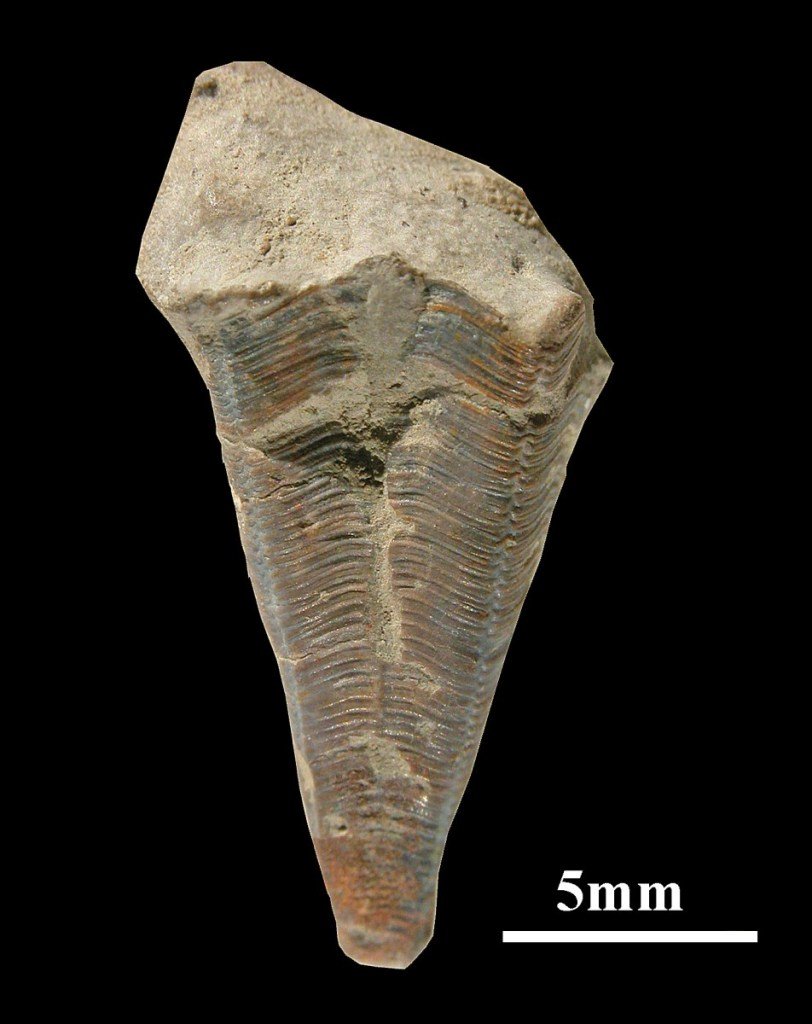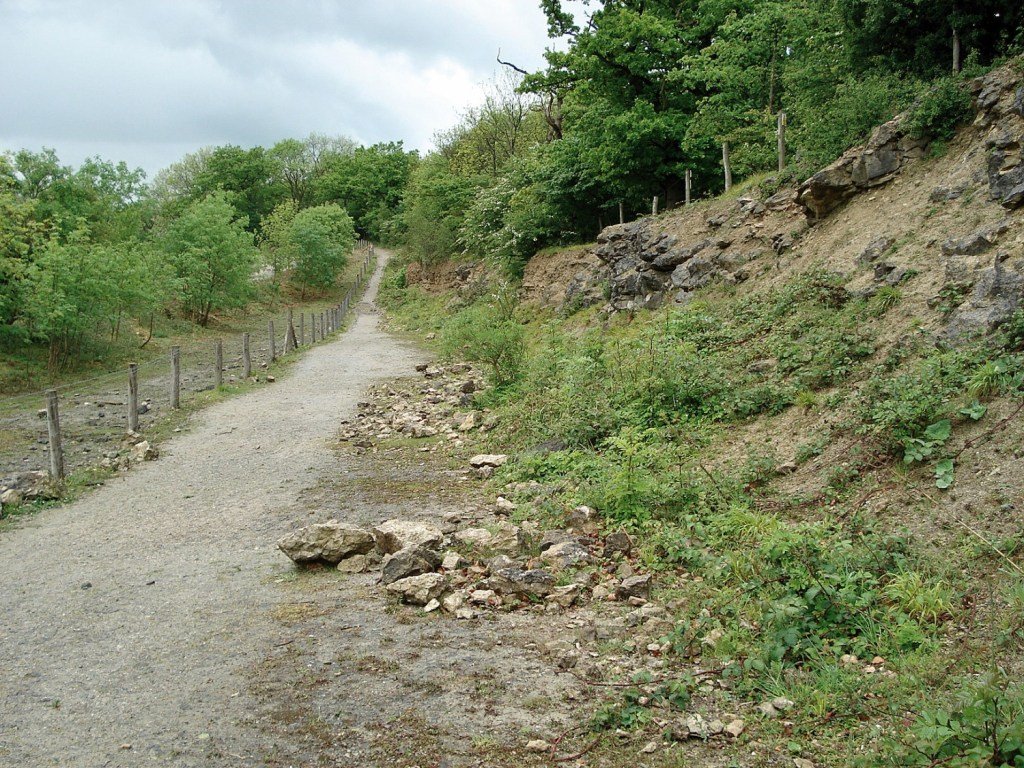Maria C Sendino and Paul D Taylor (UK)
Fossils comparable to ammonites, trilobites, crinoids and shark’s tooth understandably entice essentially the most consideration from fossil fans. Nonetheless, different teams can present equally fascinating insights into the historical past of life and ought to not be uncared for. Amongst these ‘Cinderella fossils’ are conulariids. Present in late Precambrian (Ediacaran) to Triassic marine deposits, conulariids survived for greater than 350ma, disappearing about 200 million years in the past, at a time when the continents had been clustered collectively into an enormous landmass known as Pangaea.
Nonetheless, they’re commonest in Center Ordovician to Permian rocks. Nearly 400 species of conulariids have been described from world wide, and in some locations they’re ample sufficient to lend their title to explicit geological items, for instance the Conularia-Sandstone within the Higher Ordovician of Jordan.

Affinities
What are conulariids? Initially, they had been considered molluscs due to their pyramidal-cone form that’s vaguely paying homage to a straight nautiloid. Others believed them to be worm tubes. For a very long time they had been labeled as ‘Problematica’, which is a proper approach of admitting complete ignorance about their affinities.
They’ve additionally been positioned in a phylum of their very own, the Conulariida. This uncertainty outcomes from the dearth of preserved gentle elements. Nonetheless, sturdy proof has emerged lately exhibiting that conulariids belong to the identical class – Scyphozoa – as jellyfish and are due to this fact associated to different members of the phylum Cnidaria, together with corals and sea anemones. Actually, trendy scyphozoans might have a polyp stage of their life-cycle exhibiting similarities to conulariids, notably four-sided symmetry. There are even some species of dwelling scyphozoans which have conulariid-like skeletons product of calcium phosphate.

Possibly, the conulariid animal resembled a sea anemone with tentacles perched on prime of the pyramidal shell. On condition that they had been scyphozoans, conulariids would most likely have possessed a swimming medusoid (jellyfish) stage as a part of their life-cycle, however this was unmineralized and isn’t fossilised.
Look
The primary conulariid genus to be named, Conularia, took its title from the Latin phrase conulus for cone. Actually, conulariids vaguely resemble fossilised ice-cream cones, aside from having a sq. reasonably than a round cross-sectional form. Their form is extra precisely described as acutely pyramidal. Fossil conulariids vary in size from about 2cm to 30cm, however most measure 3cm to 10cm from the closed pointed finish to the aperture on the wider open finish.
In a couple of specimens, an extended stalk has been discovered extending from the apex, whereas in others the apex is rounded. The aperture in some specimens is closed by 4, flap-like lappets, however these hardly ever fossilise. Transverse banding can also be a attribute characteristic of conulariids. The bands, usually outlined by ridges or traces of nodes, characterize strips of skeleton added on the aperture because the animal grew. Longitudinal bands may be current, on this case shaped by nodes or crests which can be aligned parallel to the size of the cone. An important options aside from the bands are deflections within the sample of ornamentation alongside the midlines of every of the 4 faces of the pyramid.
When preserved in its authentic state, the skinny, delicate skeleton of conulariids consists of calcium phosphate (apatite), however, in lots of cases, it has been misplaced, leaving solely a sediment cast or ‘steinkern’. The skeleton varies in colour, from light pink to white, pale blue or black. Viewed under a microscope, it can be seen to comprise numerous layers or laminae. Skeletons tend to be thin in the earliest conulariids but are thicker in younger species, probably as an adaptation against predators. Some conulariid skeletons contain minute pores, although these are far too small to see with an optical microscope. There are also reports of phosphatic pearls associated with conulariids. Occasionally, it is possible to find conulariids with elastically deformed skeletons, bent but not fractured, showing that they were flexible rather than brittle.

Palaeoecology
During life, conulariids were normally attached by means of the flexible stalks mentioned above to substrates, such as a brachiopod shell lying on the sea floor. Strong currents sometimes broke the stalks, casting the animals adrift. This may explain the wide distribution of conulariids, which can be found in many different lithologies, representing a spectrum from tranquil environments with slow deposition, to high-energy environments with rapid sedimentation. While some conulariids were apparently attached by their stalks, others may have lived partly embedded in soft sediments, vertically oriented with the aperture above the sediment surface.

Small sharks, including Symmorium, are thought to have featured conulariids in their diets. Conulariids have been found with repaired injuries, although these structures are uncommon and it is likely that most attacks by sharks and other predators were fatal, fragmenting or destroying the skeleton in the process.

Conulariids commonly lived alone, but they could be also live in aggregations. Notable slabs of aggregated conulariids have been collected from the Carboniferous Calciferous Sandstone Series of Glencarthom in Scotland, one showing seven and another at least 16 individuals radially arranged.
Fossils found associated with conulariids include sponges, hyolithids, bivalves, crinoids, bryozoans and brachiopods, typical constituents of sea floor (benthic) communities of the Palaeozoic. Crinoids and brachiopods were sometimes directly attached to living conulariids.
British conulariid localities
Conulariids can be collected from rocks of various ages in the British Isles. Indeed, the first conulariid ever to have been formally named – Conularia itself – came from the Carboniferous near Keswick in Cumbria and was described by the famous naturalist James Sowerby in 1821. They can also be found elsewhere in the British Carboniferous, for example, in the Redesdale Shale of County Durham and the Coal Measures of Worcestershire and Shropshire (Fig. 6).

The collections of the Natural History Museum in London contain numerous examples of conulariids from the famous Ordovician locality of Girvan in the Southern Uplands of Scotland, most collected by Mrs Elizabeth Gray (1831-1924), an intrepid collector of fossils who was awarded the Murchison Geological Fund for her great services to geology. Conulariids can also be collected from the Silurian Wenlock Limestone of Shropshire and Dudley in the West Midlands. Devonian conulariids may be found in Devon and the same county is a source of reworked Ordovician conulariids in the Triassic Budleigh Salterton Pebble Beds.

Take a look through your collection of Palaeozoic fossils. There may be a conulariid hitherto unrecognized among the brachiopods and corals. If so, you will have an example of a fossil jellyfish!
References
Leme, J. de M., Simoes, M.G., Rodrigues, S.C., Van Iten, H. & Marques, A.C. 2008. Major developments in conulariid research: problems of interpretation and future perspectives. Ameghiniana 45: 407-420.
Moore, R.C. & Harrington, H.J. 1956. Conulata. F54-F66. In: Moore, R.C. (ed.), Treatise on Invertebrate Paleontology. Part F. Coelenterata. Geological Society of America and University of Kansas Press, New York, Lawrence and Boulder.
Slater, I.L. 1907. A Monograph of British Conulariae. Monograph of the Palaeontographical Society, London No. 295, 41 pp., 5 pls.
Trending Products










